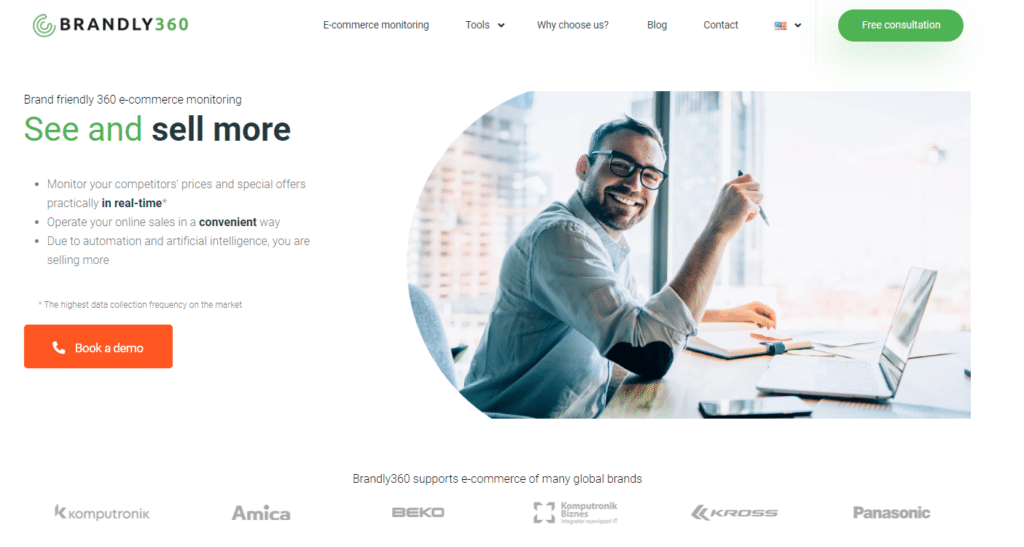Ah, the ever-elusive price point. It’s a term you’ve likely heard thrown around in conversations about business and marketing, but what does it really mean? And more importantly, how does it impact your bottom line?
Fear not, dear reader, for we’re here to help you navigate through the murky waters of price point theory. In this comprehensive guide, we’ll explore the meaning of price point and its significance in the world of commerce, as well as provide some practical advice to help you better understand this critical concept.
So, buckle up and get ready to become a price point pro!
Key Takeaways
- Price point is a strategic balance between demand and supply that influences a product’s market positioning, competitiveness, and profitability.
- Factors such as competition, market segmentation, and consumer perception play crucial roles in determining an effective price point.
- Achieving the optimal price point requires thorough market research, testing prices around a reference price point (RPP), and monitoring competitor pricing strategies.
- Avoid setting extreme price points, as they can lead to loss of customers, decreased sales, or missed profit opportunities.
What Is Price Point?
Essentially, a price point represents a point on a scale of possible prices. On a hypothetical demand curve, there are multiple price points that represent different levels of demand and, therefore, profit.
As such, each price point refers to a specific price at which a product or service is offered to consumers within a broader pricing structure. It shows the delicate balance between demand and supply in the market, with sellers aiming to maximize profits while buyers seek value for their money.
Price, on the other hand, is the actual amount of money assigned to a product or service. It is the figure that consumers pay in exchange for a good or service.
Relationship Between Price and Price Point
While often used interchangeably, “price” and “price point” have different meanings. The key difference between price point and price lies in their focus and context.
While price simply refers to the monetary value of a product or service, i.e., it is the actual selling price, the price point is more concerned with its strategic positioning within a pricing structure – i.e., it is the potential selling price.
Price point often takes into account factors such as:
- production costs,
- competitors monitoring,
- consumer perception,
- market segmentation.
For example, when comparing two similar products with different prices, one may have a lower price point due to factors such as brand reputation, additional features, or better quality materials. In this case, the price point helps differentiate the products by highlighting their relative positions in the market and justifying their respective prices.
Want to get set up with competitor monitoring, price tracking and even more?
Book a free demo to monitor any e-commerce competitor pricing and get instant info of important price movements and more!
How Does Price Point Work?
Price point refers to the strategic process of determining how to price a product or service by carefully analyzing various market variables. The primary goal is to find a balance between maximizing profits and maintaining customer satisfaction.
Several factors, such as demand and supply, competition, and the availability of substitute products, play crucial roles in establishing the market price.
Demand and supply are key determinants of a product’s price point. These two elements are interrelated, and any change in one will have an impact on the other.
For instance, if the demand for a particular product increases, its price might rise due to increased competition among buyers. Conversely, if the supply of a product exceeds its demand, the price may decrease as sellers attempt to clear their inventory.

Competition and the availability of substitute products also significantly influence price points. Businesses must consider their competitors’ pricing strategies and the existence of alternative options for consumers when setting their prices.
It is essential to continuously monitor market conditions and be prepared to adjust price points as necessary to remain competitive and successful in the marketplace.
Why Is Price Point Important?
The significance of price point can be explained in a number of factors, as it greatly impacts a business’s ability to attract customers, set competitive prices, and maintain profitability.
Here are some key reasons why the price point is crucial:
- Meeting Consumer Expectations. A well-chosen price point can help businesses meet the expectations of their target market. By understanding what your customers are willing to pay for a particular product or service, you can create a sense of value and encourage them to make a purchase.
- Competitive Advantage. By strategically positioning your offerings within an existing pricing structure or creating a new one entirely, you can differentiate yourself from competitors and potentially attract more customers.
- Profitability. The ultimate goal of any business is to generate profit. Properly identifying and implementing the ideal price point can help you optimize your profit margins while still providing value to your customers. A product priced too high may drive customers away, while a product priced too low may not generate higher profits, enough to cover costs or create long-term sustainability.
- Market Segmentation. Price points can be used to target different segments of the market. By offering products or services at various price points, businesses can cater to consumers with varying budgets and preferences, potentially expanding their customer base and increasing sales.
- Psychological Pricing. Consumers often perceive prices as more than just numbers; they may associate specific price points with various levels of quality or status. By understanding these psychological factors, businesses can employ pricing strategies that appeal to consumers’ emotions and drive purchase decisions.
- Elasticity of Demand. Price points directly impact the demand for a product or service. Understanding how sensitive consumer demand is to changes in a selling price (elasticity) can help businesses make informed decisions when setting their price points to maximize sales volume and revenue.
How to Set a Price Point?
Now that you understand the concept of price point and know its primary advantages, the next step is to learn how to achieve it effectively.
Manufacturers and retailers must recognize that pricing plays a crucial role in market competitiveness. As pricing is a fluid component of business strategy, it should be based on multiple metrics such as market research, unique selling proposition, and competition.
In reality, given the vast market size and complexity, it can be challenging for manufacturers to derive a demand curve like the one described earlier. To address this issue, businesses can employ tried-and-true solutions to determine an optimal price point in real-world situations:
- Conduct thorough market research. Studying the market carefully and taking all input factors into account will help businesses arrive at a reference price point (RPP). Analyzing consumer behavior, preferences, and willingness to pay, as well as competitors’ pricing strategies, will provide valuable insights for setting an appropriate RPP.
- Experiment with prices around the RPP. After determining an RPP, businesses should test different prices adjacent to it to identify the optimal balance between profitability and competitiveness. This process involves adjusting prices slightly above or below the RPP and monitoring resulting sales volumes and profits.
- Monitor competitor pricing. Continuously keeping an eye on rivals’ prices and the availability of competitive products is essential for maintaining an optimal price point. Businesses should be prepared to adjust their prices in response to changes in the market landscape or competitor strategies.
- Avoid extreme price points. It’s crucial not to choose a price point that is either too high or too low compared to the average market price for a product or service. Setting prices too high may result in the loss of customers due to perceived poor value, while excessively low prices could lead to revenue loss or missed profit opportunities.
- Understand the consequences of your chosen price point. Be aware that selecting a high price point may deter potential customers, leading to decreased sales. On the other hand, choosing a low price point might result in lower overall revenue or missed chances to maximize profits.
Achieving an effective price point requires a combination of market research, strategic pricing adjustments, competitor analysis, and careful consideration of potential consequences. By employing these tactics, businesses can establish a competitive and profitable price point for their products or services while meeting consumer expectations and needs.
How Brandly360 Can Help You
Determining the optimal price point for your products is a crucial aspect of maintaining a competitive edge in the market. Brandly360 offers a comprehensive suite of tools designed to support you in this endeavor, ensuring that your products remain appealing to customers while continuing to generate profit.
For one, Brandly360’s promo and sales tracking tool provides valuable insights into your competitors’ promotional activities and pricing strategies. By analyzing this data, you can identify emerging trends and adjust your pricing accordingly.
This ensures that your products are competitively priced, maximizing customer appeal while maintaining profitability.

Brandly360 also offers banner ad monitoring in online stores. This feature allows you to keep an eye on the advertising efforts of your competitors, providing insights into their marketing strategies and targeted pricing.
By staying informed about the promotional landscape in your industry, you can make data-driven decisions when setting your price points online, ensuring that your products are well-positioned to attract potential customers.
Utilizing Brandly360’s advanced tools can empower businesses to set strategic price points that not only attract customers but also maintain profitability.
Want to get set up with competitor monitoring, price tracking and even more?
Book a free demo to monitor any e-commerce competitor pricing and get instant info of important price movements and more!

Manager with experience in leading team of software developers and testers during implementation of internal and external IT projects. Ceo of Brandly360.com.


